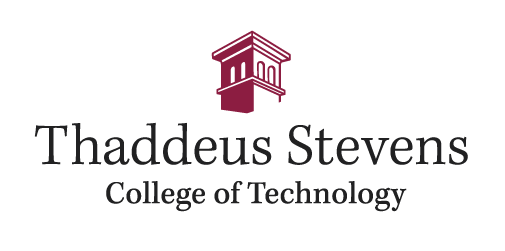Metals Fabrication & Welding Technology Schedule & Curriculum
MODEL SCHEDULE FOR METALS FABRICATION & WELDING TECHNOLOGY
SEMESTER 1
MFWT 106 Gas Metal Arc Welding/Plasma Arc Cutting 3
MFWT 111 Metals Fab I – Intro to Hand & Machine Processes 3
MFWT 121 HVAC Duct Design and Fabrication 3
MFWT 126 Drafting Fundamentals 3
MATH 137 Intermediate Algebra 3
CIS 111 Intro to Computer Applications 3
SEMESTER 2
MFWT 153 Oxy-Acetylene Welding and Cutting/Flux Cored Arc Welding 3
MFWT 161 Metals Fabrication II – Parallel Line
Development Machine Processes 3
MFWT 167 Industrial Applications/Fabrication
Blue Print Reading 2
MFWT 171 Materials of the Trade/Applied Metallurgy 2
MATH 132 Geometry or Math 141 Trigonometry 3
CIS 105 Drawing with Auto Cad 3
SEMESTER 3
MFWT 207 Shielded Metal Arc Welding 4
MFWT 212 Metals Fabrication III – Triangulation
Pattern Machine Processes 4
MFWT 222 CNC Applications and Estimating 4
Physics Elective PHYS101, PHYS106, PHYS 113, or
PHYS213 3
ENG 106 Composition 3
SEMESTER 4
MFWT 257 Gas Tungsten Arc Welding 4
MFWT 262 Metals Fabrication IV 4
MFWT 267 Industrial Apps III –
Print Reading forWelding 4
ENG 216 Technical Writing 3
ELECTIVE Humanities Elective 3
ADDITIONAL GENERAL EDUCATION REQUIREMENTS
HEAL Elective HEAL 106 or HEAL 111 1
TOTAL CREDITS 71
Click here to download PDF version of Metals Fabrication & Welding Technology's Curriculum
MFWT 126 (3 credits)
Drafting Fundamentals
Introduction to drafting and sketching techniques. Major topics include geometric construction, drafting equipment, and orthographic projections. Mechanical drawing required.
MFWT 156 (2 credits)
Oxy-Acetylene Welding, Cutting, and Brazing
Offers a technical understanding of oxy-acetylene welding, flame cutting, brazing fundamentals, and welding safety. Training for manual skill necessary to produce
Prerequisite: MFWT 111
MFWT 161 (3 credits)
Metals Fabrication II: Parallel Line Development and Machine Processes
Instruction in the use of precision measuring tools and saws. Use of parallel line method of pattern development for fabrication of elbows, tees, and offsets using sheet metal, pipe, and plate materials are covered.
Prerequisite: MFWT 111
MFWT 166 (3 credits)
Industrial Applications I: Fabrication Blueprint Reading
Discusses the equipment used in the various fabrication and welding trades, such as sheet and plate products plus structures, tubing, pipe, and the various alloys of steel, aluminum
Prerequisite: MFWT 111
MFWT 171 (2 credits)
Materials of the Trade and Applied Metallurgy
Covers the common materials, designations, and methods of measurement used in the various fabrication and welding trades. Sheet and plate products plus structures, tubing, pipe, and the various alloys of steel, aluminum, and stainless steel are discussed.
MFWT 207 (4 credits)
Shielded Metal Arc Welding
Provides students with a thorough technical understanding of shielded metal arc welding fundamentals, welding safety, welding machines, and electrode classifications and selections. It also provides training to develop the manual skill necessary to produce high quality shielded metal arc welds in all positions on mild steel from 16
Prerequisite: MFWT 156
MFWT 212 (4 credits)
Metals Fabrication III: Triangulation Pattern
Developmental and Advanced Machine Processes Designed to introduce students to the triangulation method of pattern development. Using this discipline of pattern development, students design,
Prerequisites: MFWT 111 and MFWT 161
MFWT 222 (4 credits)
Industrial Applications II: CNC Applications and Estimating
The major objective of this course is to introduce students to aspects of programming and utilizing computer-controlled plasma and oxy-fuel cutting systems. Students use AutoCAD® and MTC ProNest software packages to produce duct, weldment, and miscellaneous profile parts from blueprints, sketches, and field measurements. Programmed parts are then nested and cut on given sheet or plate sizes using state-of-the-art computer numerical control (CNC) systems or plasma cutting system. Layout techniques previously learned for profile programming jobs are utilized. Other topics covered in this course are project management and estimating.
Prerequisites: MFWT 161 and CIS 105
MFWT 257 (4 credits)
Gas Tungsten Arc Welding
Provides students with a thorough understanding of gas tungsten arc welding fundamentals, arc characteristics, and welding safety. It provides training to develop the manual skill necessary to make
Prerequisite: MFWT 156
MFWT 262 (4 credits)
Metals Fabrication IV: Radial Design Development and Machine Processes
This course is designed to instruct students in the use of the radial line method of pattern development. Students
Prerequisite: MFWT 111
MFWT 267 (4 credits)
Industrial Applications III: Print Reading for Welding/ Field Equipment and Rigging
Selected on- and off-
